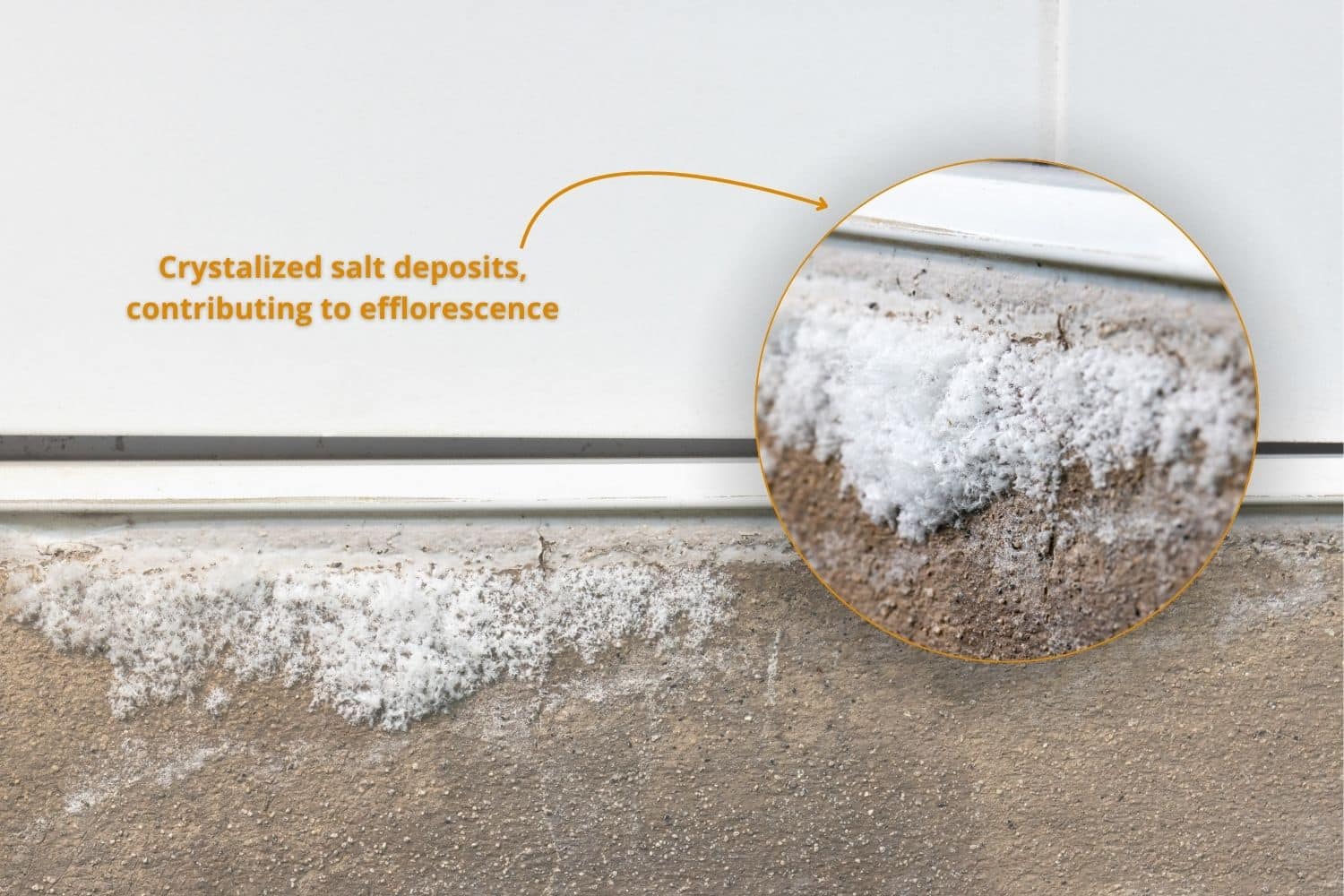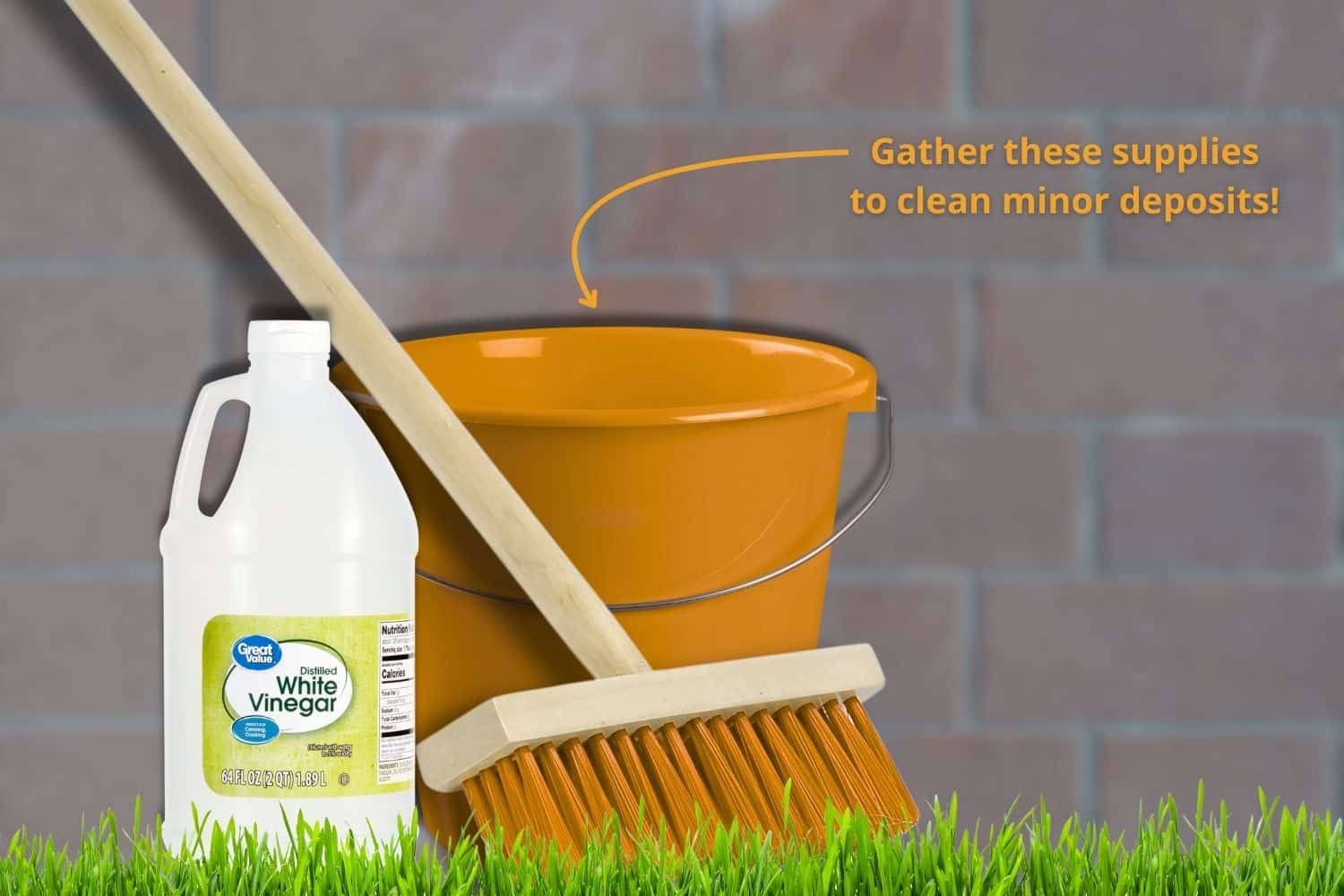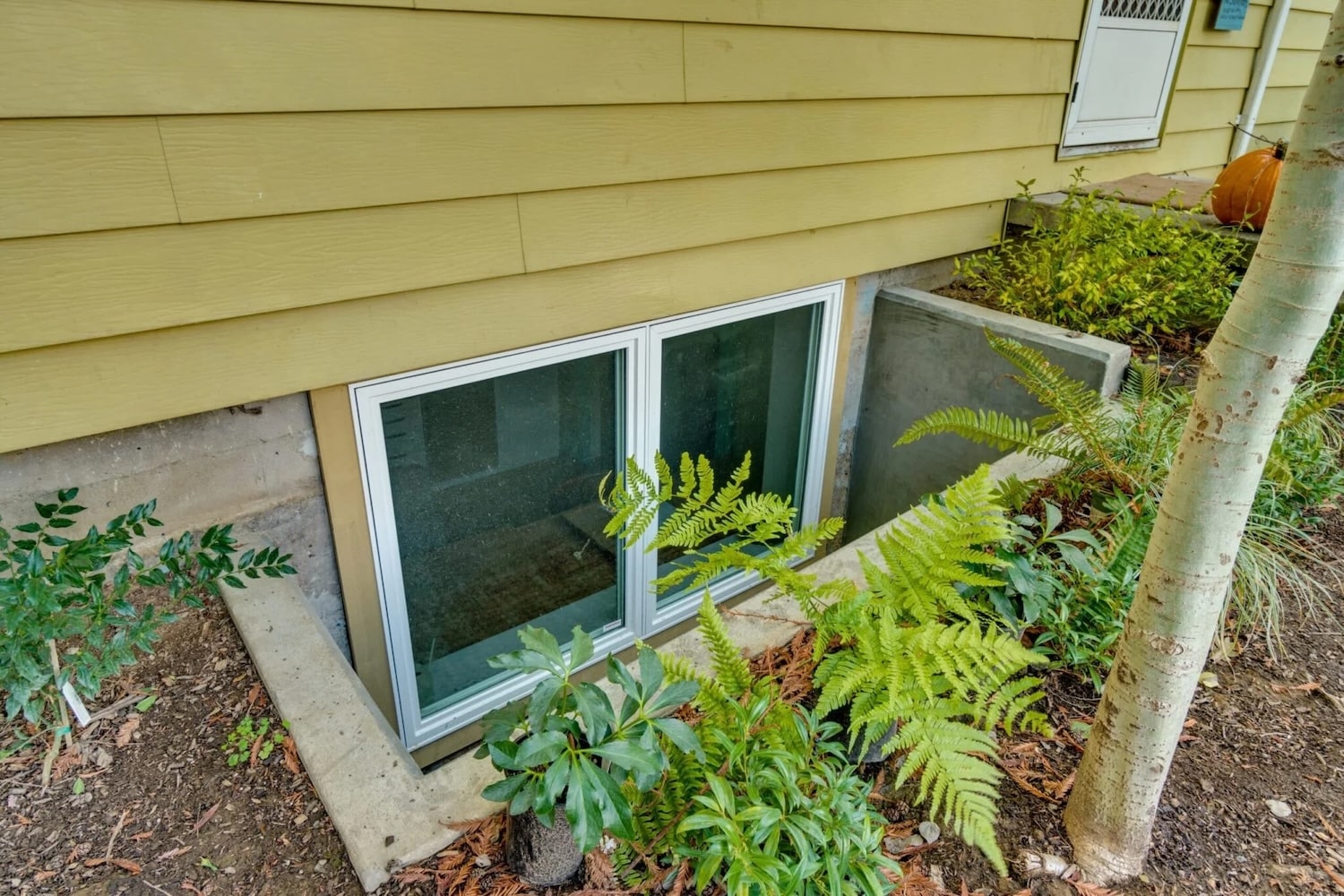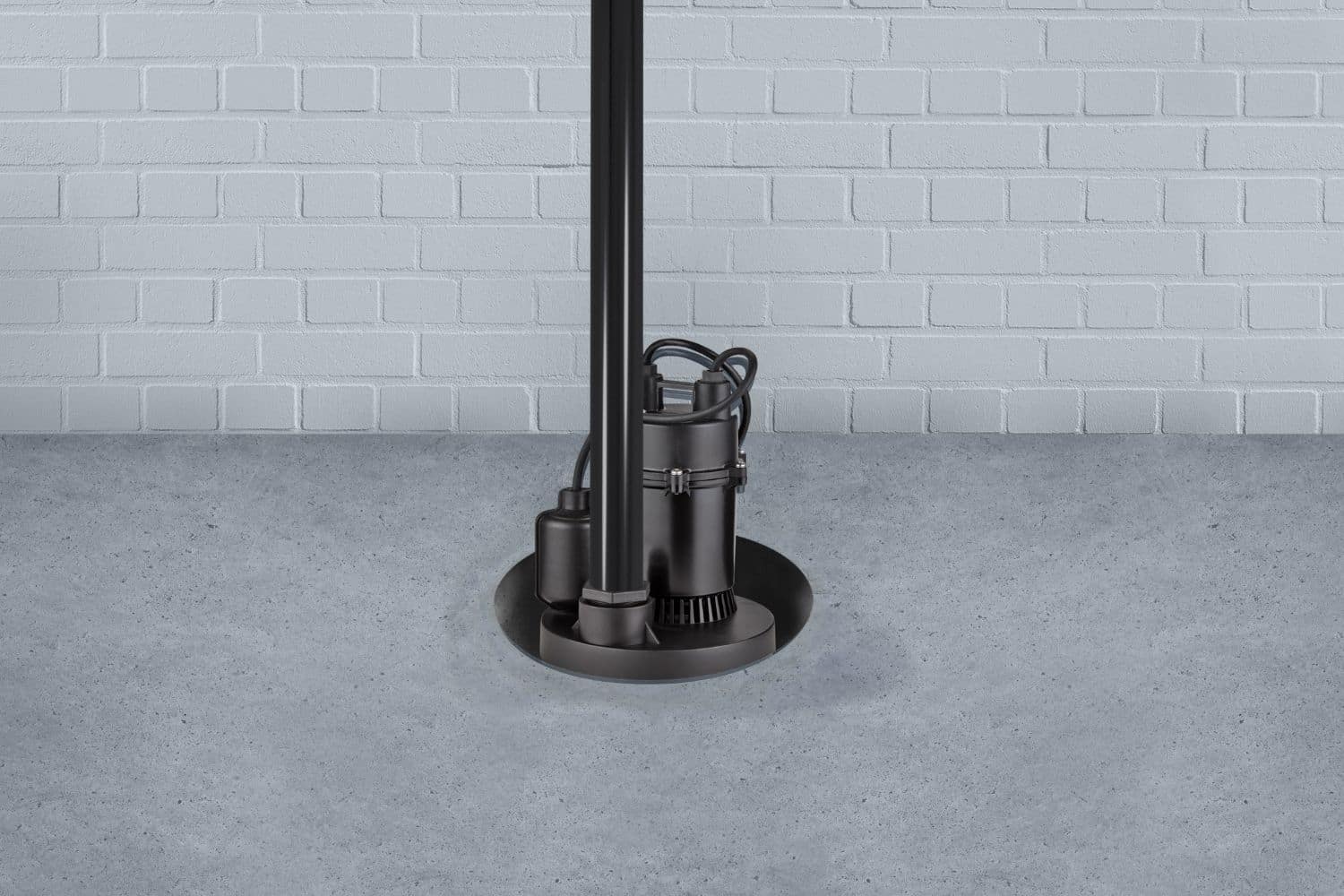If you have ever noticed white, chalky stains on your basement walls, garage floor, or concrete patio, you have likely seen concrete efflorescence. Many homeowners worry this is a sign of serious damage or mold, but that is not always the case. So, what is concrete efflorescence?
In this guide, we will explain what it is, what causes it, and how to safely address it. If you are buying or maintaining a home, especially here in the Naperville area and throughout Northern Illinois, knowing how to deal with efflorescence can help you protect your property.
What is Concrete Efflorescence?
Concrete efflorescence is a white, powdery deposit that forms on the surface of concrete, brick, stone, or masonry. It is caused by water-soluble salts moving through the material and evaporating at the surface. When the water evaporates, it leaves the salts behind as a visible residue.
You will most often see efflorescence on:
- Basement walls
- Concrete floors
- Garage slabs
- Exterior foundation walls
- Brick chimneys or patios

What Causes It?
For efflorescence to form, three conditions must be present:
- Water-soluble salts must be present in the concrete or masonry material.
- Moisture must move through the material, carrying the salts to the surface.
- The water must evaporate, leaving the salts behind.
Sources of moisture that can contribute to efflorescence include:
- Groundwater seeping through a foundation
- Rainwater penetrating exterior walls
- High indoor humidity in basements or crawlspaces
- Improper grading around the foundation
- Poor drainage or clogged gutters
In Illinois, where seasonal rains and snowmelt can lead to foundation moisture, these conditions are common. Many of the homes we inspect in Naperville and surrounding suburbs show signs of efflorescence, especially in older basements or garages that lack modern waterproofing.
Is Efflorescence a Structural Concern?
In most cases, efflorescence is a cosmetic issue, not a structural one. The white deposits themselves do not weaken the concrete or cause lasting damage. However, their presence does indicate that moisture is moving through the material. That can lead to other problems if left unchecked.
If moisture continues unchecked, it can contribute to:
- Mold or mildew growth in surrounding areas
- Deterioration of coatings or paints
- Increased humidity inside the home
- Freeze-thaw damage in cold climates
This is why it is important to address the underlying moisture source, even if the efflorescence itself is not harmful.
How to Remove Efflorescence
Once you address the moisture source, you can safely clean efflorescence from the surface:
- For light deposits, dry brushing or vacuuming may be enough.
- For heavier deposits, a solution of water and white vinegar can help dissolve the salts. Always test in a small area first.
- Specialized masonry cleaners are also available for more stubborn cases, but should be used carefully and according to the manufacturer’s directions.
Do not simply paint over efflorescence without correcting the moisture problem first. Trapping moisture inside the wall can make the problem worse over time.

How to Prevent Efflorescence
Long-term prevention focuses on controlling moisture:
- Improve drainage: Make sure the soil around your foundation slopes away from the home. Clean and maintain gutters and downspouts.
- Seal exterior surfaces: Waterproof coatings can help block moisture from penetrating exterior walls. Always choose products appropriate for the material and climate.
- Control indoor humidity: Use dehumidifiers in basements or crawlspaces. Ensure proper ventilation in areas prone to moisture.
- Repair cracks: Seal foundation cracks and gaps where water may enter.
Our inspectors at Prospective Home Inspections often recommend these strategies to Naperville-area homeowners after seeing efflorescence during full home inspections. With Northern Illinois’ variable weather, moisture management is an important part of keeping homes in good condition year-round.
Other Smart Maintenance
As part of regular home maintenance, it is a good idea to:
- Inspect basements and crawlspaces seasonally for signs of moisture or staining.
- Check gutters and downspouts to ensure proper function.
- Monitor grading and landscaping to maintain good drainage away from the home.
- Schedule periodic home inspections to catch developing issues early.
Keeping moisture in check helps protect not only concrete surfaces, but also your home’s structure, air quality, and finishes.
Conclusion
Concrete efflorescence can be unsightly, but it is usually not a sign of serious damage. Still, it is important to understand what causes it and take steps to prevent moisture from reaching your concrete and masonry.
If you are buying a home or want to better understand the condition of your current property, a professional inspection can help identify moisture issues and other concerns before they become larger problems. The Prospective team has extensive experience with foundation and moisture concerns common to homes in Naperville, Chicagoland suburbs, and Northern Illinois.






